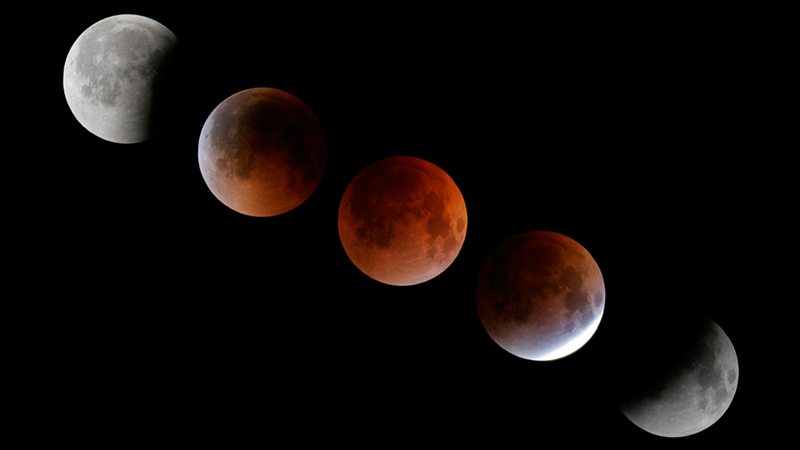
Early Wednesday morning on October 8, the full moon will become engulfed in darkness and cast a blood-red glow across night. And though this kind of thing was a little scary to many cultures in the past, today a total lunar eclipse is something simply to be enjoyed.
Each month when the moon passes through its full phase, reaching the point in its orbit around Earth where it is opposite in the sky from the sun, it comes close to the shadow the Earth casts into space, usually passing just above or below it. But on rarer occasion, such as the full moon of October 8, 2014, the sun, Earth and moon will come into alignment and the moon will pass through Earth’s shadow.
The entire event, from the time the moon first touches the partial shadow of the Earth called the penumbra (literally “almost shadow”) to when it finally departs once again, will take place over a little more than five hours, starting at 1:15 AM PDT and ending around 6:30 AM, as twilight begins to grow.
If you want to experience the entire event then set your alarm for around 1:00 AM and find a comfortable place with a sweeping view of the southern sky and the full moon. Then, watch.
